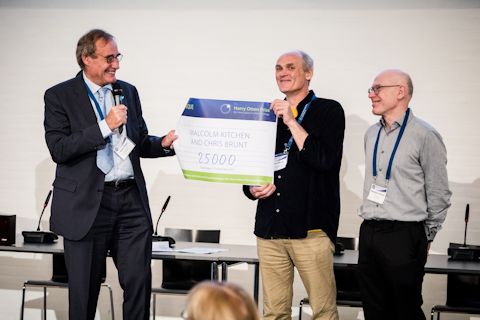A new method that uses signals broadcast by commercial flights to detect atmospheric humidity has won a major meteorology award.
The European Meteorological Society’s 2019 Harry Otten Prize for Innovation in Meteorology was awarded to the UK Met Office’s Malcolm Kitchen and Dr Chris Brunt of Exeter University at a ceremony in Copenhagen last month.
The method they propose uses ground-based sensors to detect the refractivity structure of the atmosphere. Atmospheric refractivity refers to the phenomenon of radio waves bending as they pass through the atmosphere.
Because there is a close correlation between refractivity and humidity, measuring the level of refractivity of radio waves has become an effective method for forecasting humidity. Experts say it is an advance on traditional humidity measurements by weather stations and radiosondes on weather balloons, which offer no way of understanding the three-dimensional structure of atmospheric humidity.
Tech companies such as the San Francisco-based startup Spire, for example, use small low-earth-orbit satellites to measure the bending of GPS signals to determine climatic conditions in the atmosphere.
Kitchen and Brunt’s method is meant to complement existing technologies like Spire’s satellite constellation. They propose using simple two-element interferometers sited on hilltops to measure the angle-of-arrival (AoA) of radio transmissions from aircrafts’ Automatic Dependent Surveillance – Broadcast (ADS-B) systems. If the point of origin of the signals is also known, then the two measurements can be used to calculate the bending angle, allowing meteorologists to predict atmospheric humidity better.
ADS-B is a surveillance technology that aircraft use to broadcast their location for air traffic and anti-collision purposes. It is already widely used on aircraft and its deployment is set to grow with aviation authorities in both the US and Europe currently mandating its full adoption for all commercial flight.
Since ADS-B messages are broadcast every few seconds and can be decoded without consent, the system could be implemented anywhere in the world where there is a high enough density of civil air traffic.
According to the researchers, for their opportunistic, low-cost technique to work, the interferometer would need to be placed in locations with a clear view of the horizon and a vertical baseline of around 10m. They have proposed mounting the devices on existing weather radar towers to avoid the cost of building mounting structures from scratch. The researchers are currently using an experimental interferometer to assess the feasibility of their method.
The UK National Environment Research Council (NERC) has assessed the method as being at a Technology Readiness Level (TRL) of around four. Most of the €25,000 (US$27,000) award money from the Harry Otten prize will go toward funding a PhD studentship at Exeter University for further development of the method, with the goal of achieving TRL 6, according to the UK Met Office.



